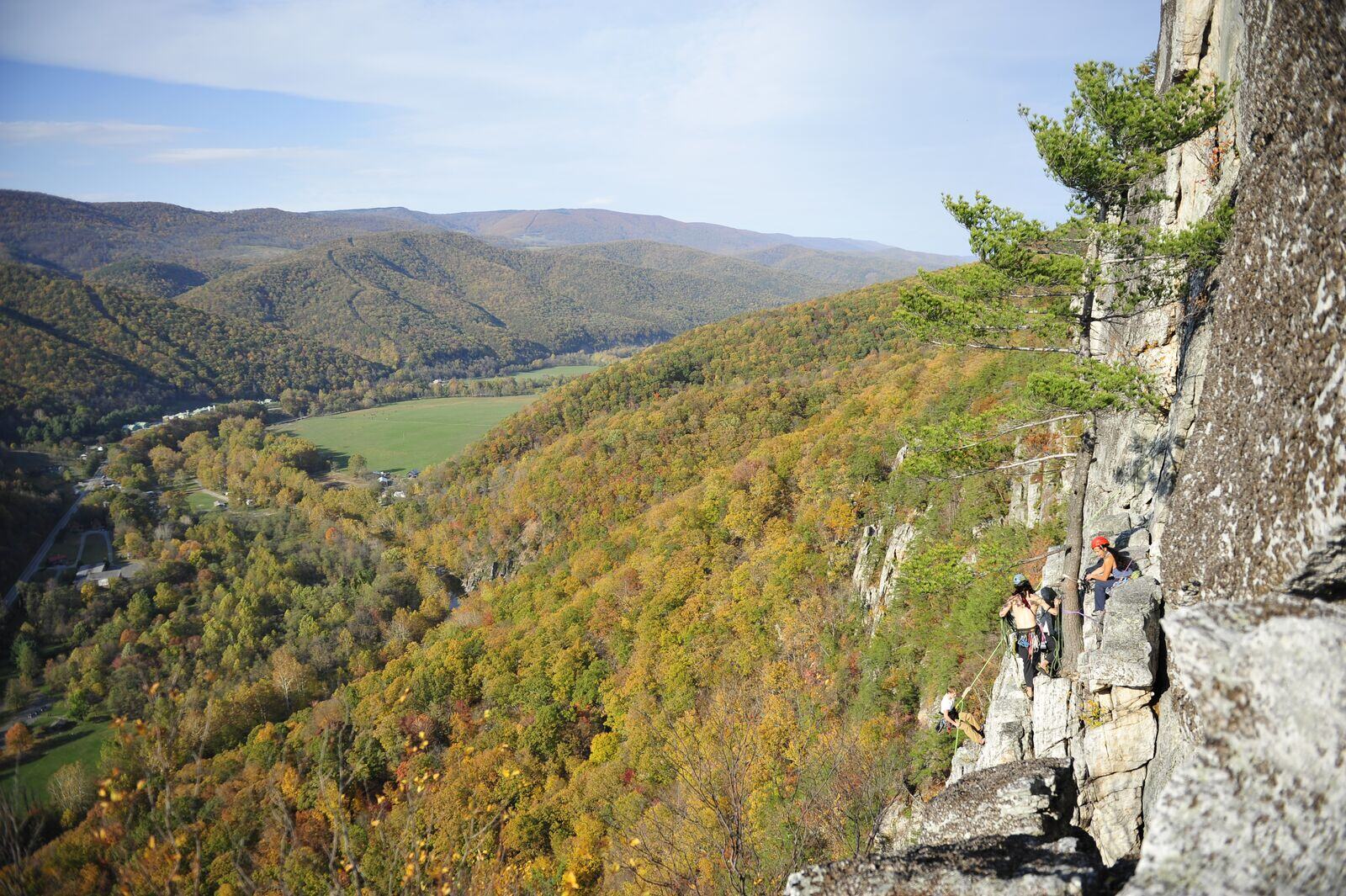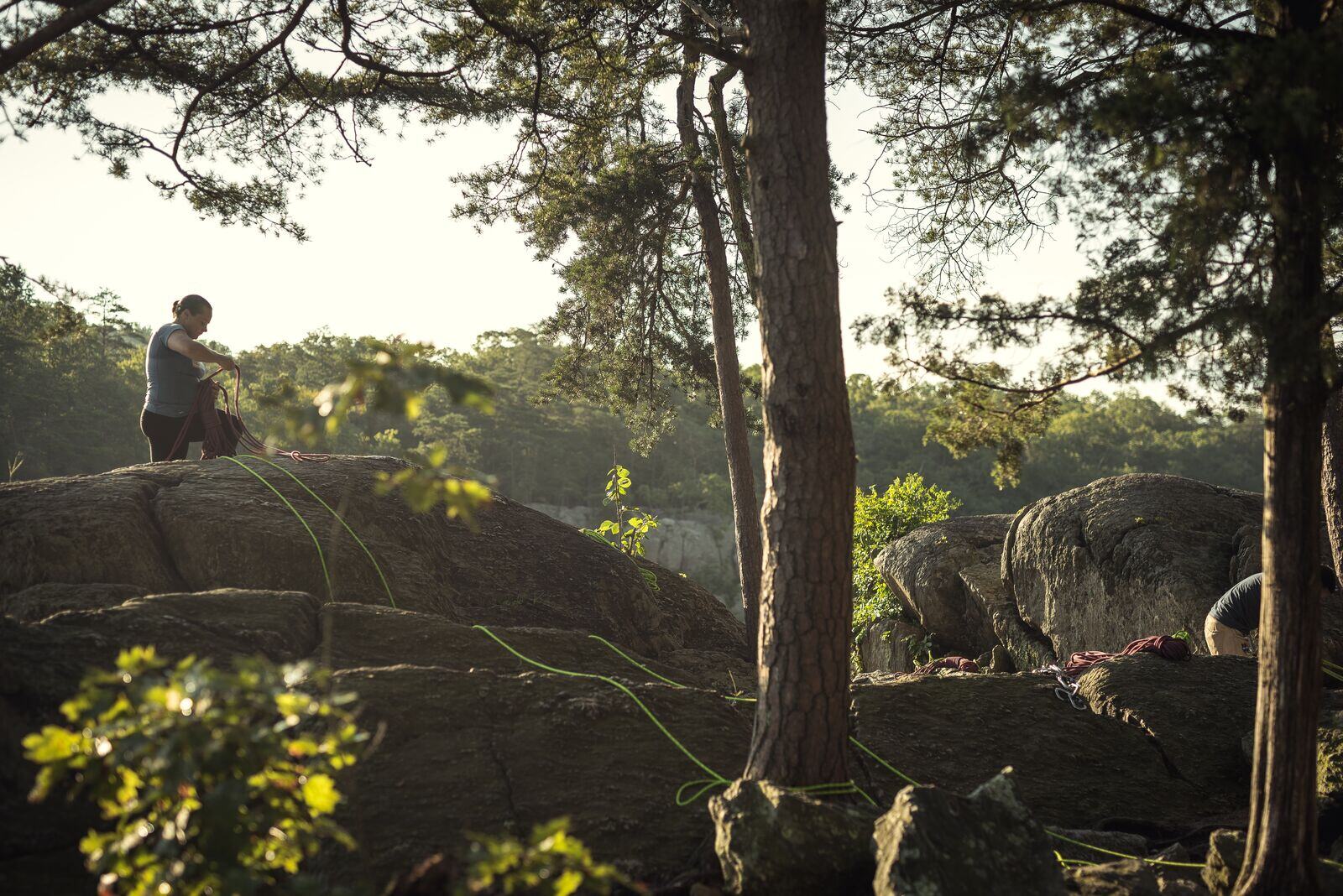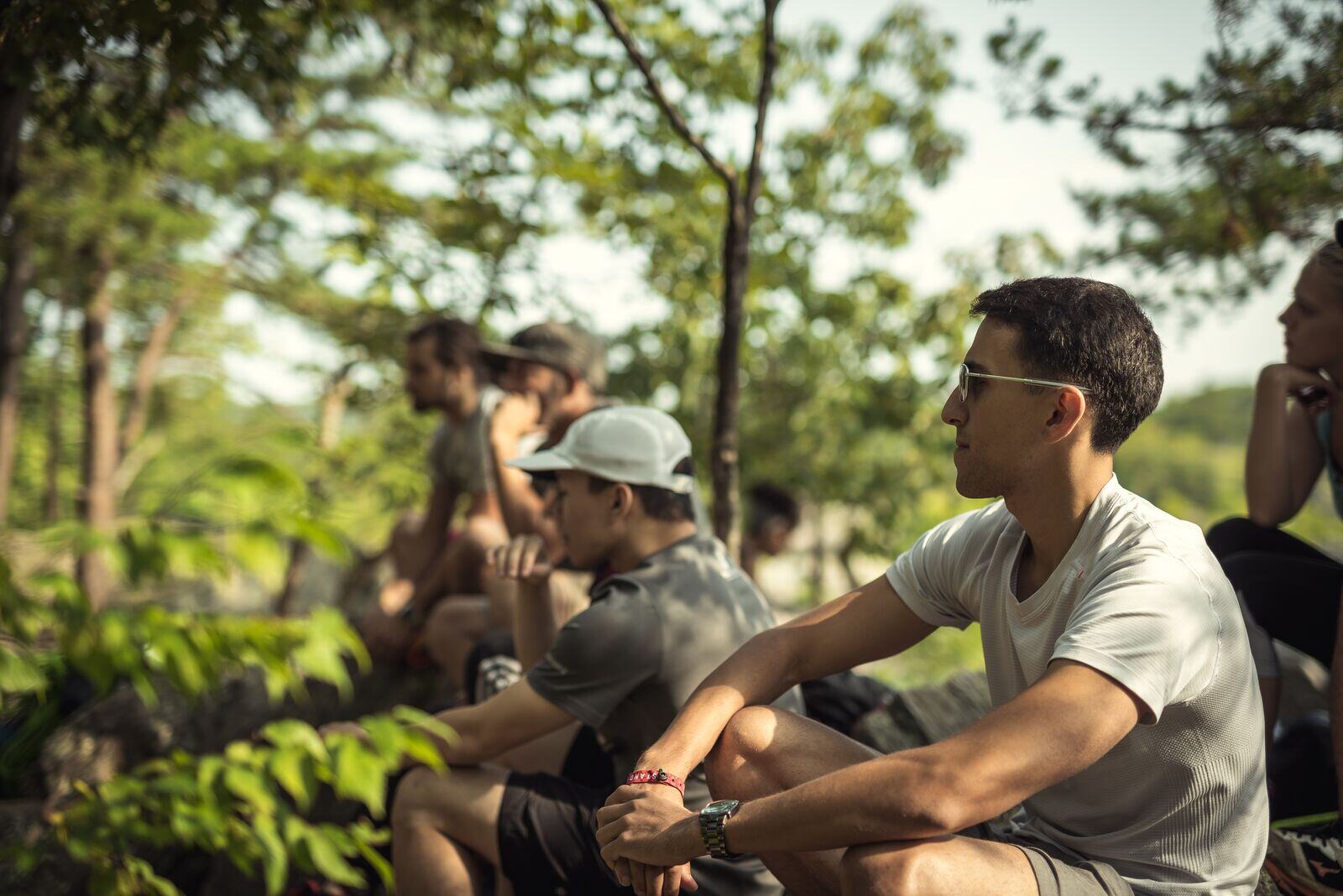Top Tips to Get Started Climbing Outside
Spent plenty of sessions crushing it at our indoor gyms and feeling ready to take your skills to the great outdoors? We're so stoked for you to experience the thrill of climbing on real rock. There's nothing quite like fresh air, the sounds of nature, and that satisfying burn as you problem-solve your way up an outdoor route or boulder.
While outdoor climbing is ultra rewarding, it also requires some extra prep and know-how compared to gym sessions. But don't sweat it – we're breaking down some tips to make that transition to outdoor sending seamless.

Any skill level can start climbing outside
No matter what level you climb, when you make your way outside, start climbing at a grade level that's much lower than your gym grade so you can get comfortable with the experience of climbing outdoors with less risk.
While no prior experience with climbing is necessary to start climbing outside, it's recommended to get familiar with the basics in the climbing gym. You can practice skills like proper falling technique in bouldering or lead climbing and belaying on ropes.
Take some classes for outdoor skills, or go with someone more experienced than you are
Before making your way outdoors, we recommend taking some outdoor climbing classes at your local climbing gym to learn the ins and outs of outdoor climbing in a familiar setting. Our outdoor classes at Movement provide an introduction to outdoor climbing, but additional education may be required to gain specific skills.
Additionally, you should aim to go outside for the first time—or even the first few times—with a friend who has outdoor climbing experience, or even hire a local guide. Having a mentor reduces stress and ups the stoke, and they can help guide you through uniquely outdoor climbing experiences, like reading routes, how to properly place bouldering pads, gear placement and anchor building.

Mitigate your risk and prepare thoroughly
Always keep safety top of mind, and when it comes to outdoor climbing, having a plan means being safe. Ensure you have the proper gear for the climbing you will be doing, detailed beta on the climbing area, and always check the weather forecast before heading out.
Additionally, check the crag’s local climbing coalition website for any updates while planning your trip. Some climbing areas can be closed during nesting periods for animals or erosion has affected the area or route. Climbing coalitions will have the latest information that guidebooks will not.
It's important to be aware that when climbing outdoors, you're not as directly accessible for help in the event of injury as you are in a gym. Don't take any unnecessary risks, and always follow safety protocols like double checking your gear and knots and wearing a helmet when rope climbing.
Reading the route
When you're climbing outside, you'll notice there aren't colorful holds or tape marking the route like you find in a gym. To read a route, you'll want to start by looking for any chalky areas along the rock face. That's going to give you a good idea of where other climbers have been and what they're reaching for along the route.
Before you arrive at the crag, you can also review climbing areas and routes through a guidebook or through Mountain Project. Guidebooks can be found at local gear and outdoor shops, including Movement gear shops!

Know and practice good crag etiquette
Practicing good crag etiquette is a great place to start understanding the connection between climbing and nature preservation and get to know members of the climbing community.
Follow the principles of Leave No Trace (LNT) whenever you’re outdoors. As climbers, we’re privileged to explore and engage with natural spaces through our sport, but we have a responsibility to be good stewards of these environments. LNT is just one part of practicing good climbing stewardship! Avoid creating new trails or climbing routes, as this can cause irreversible damage to the environment. Stick to established paths and routes whenever possible.
Be mindful of the experience of others. When you get to the crag, ask around to see what routes other people are waiting for instead of just hopping on a route. If you’d like to bring your dog along keeping your pup on a leash is a good way to be considerate of other folks at the crag. And lastly, don't blast music at the crag - enjoy the outdoors!
Come climb with us! Find a Movement Gym near you.

